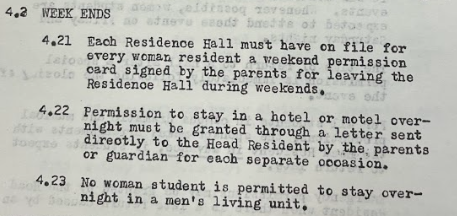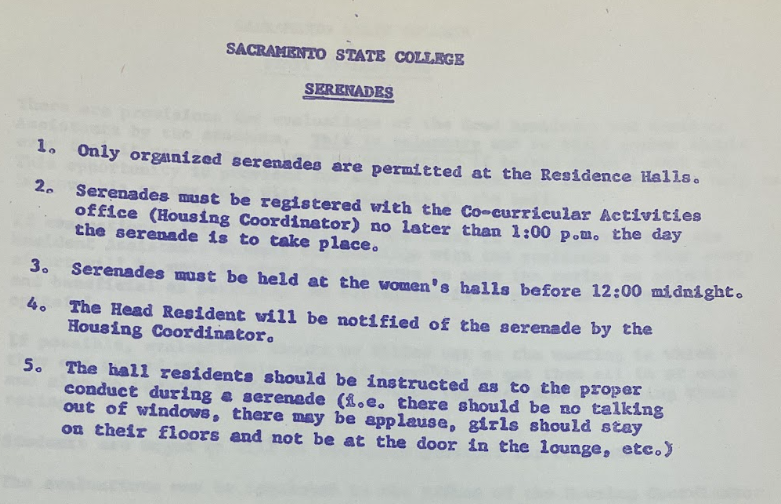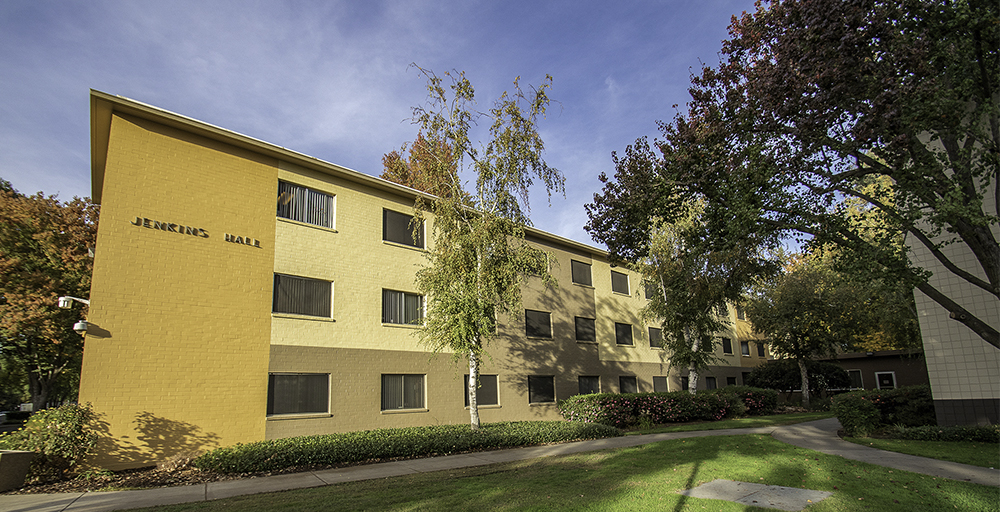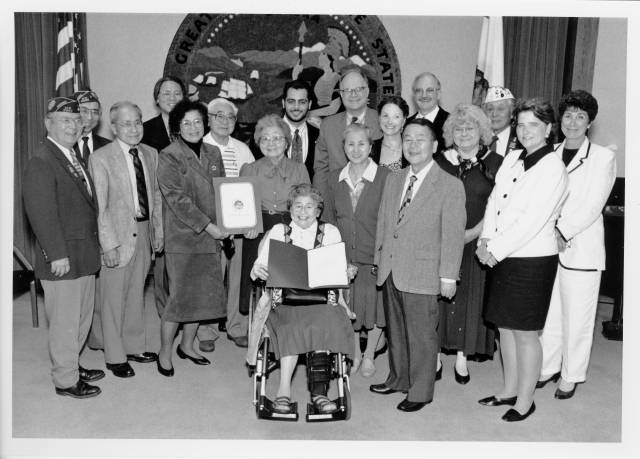Rule 1:
No jeans to the cafeteria!

The handbook for the women’s residence Jenkins Hall in 1960, entitled Hallways, provides its inhabitants with an interesting list of rules for how to dress. Standing out most prominently amongst its prohibitive peers is the rule against wearing jeans to the dining commons.
During the 1950’s and early 1960’s, Cold War expectations weighed heavily on the minds of Americans. Women in particular were expected to adhere to femininity as a means to portray America’s success. Of course, this not only meant acting the part, but dressing it, too! Dressing in so-called “good taste” clothing was essential to proving America as the better country. If the women are happy and healthy, then the country’s happy and healthy! Right?
Such expectations led to some goofy (and restrictive!) rules for women’s appearance, like prohibiting jeans to the dining commons. Basically, you could forget about pants unless you happened to contribute to the college’s athletics teams.
Rule 2:
Parent permission is key!

Hallways not only focused on women’s appearances, but their activities were actively regulated and enforced, too. We all think of weekends as opportunities to run errands, go out and have some fun with friends, or spend sometime getting fresh air in the great outdoors. Well, good luck doing any of that without a parent permission slip at Sacramento State in the 1960s.
During the Cold War, the idea of an independent woman, while not necessarily a foreign idea, was generally a (greatly) discouraged idea. Strangely enough, Americans saw the housewife as an expression of success and freedom for women. Men worked so darned hard and well, that women simply didn’t need to leave the house!
Combining this expectation with the general fear of urban living, parents and Sacramento State officials made it a priority to “protect” their population of female students from the outside world. Residence halls became the new household to cradle women from the outside. So… maybe best to cancel those weekend plans, and get to studying.
Rule 3:
Serenading has its limits!

If a partner ever had a whim to woo their partner from the streets below, Sacramento State guaranteed the whim was taken out of such a whimsical desire.
Cold War fears of the independent woman, her sexual freedom, and what that meant for American society ran rampant. Besides regulating women back into the household, American society at the time paid close attention to women’s behavior and so-called “morality.” In other words, talking to boys without supervision remained a huge no-no.
Hallways rules required women residents to inform their Head Resident of any guests, and if they happened to be men, visiting could only be conducted in the public areas of the residence halls. If you were looking to have a private conversation, you’d be better off passing notes like in grade school. And, strangely enough, serenades happened often enough to require some regulation. As seen above, even something meant for the whimsy of the heart was carefully controlled. For the young women’s sake, of course (sarcasm).
Still curious? Don’t hesitate to take a peek in the University archives for more.
References:
Donald & Beverly Gerth Special Collections & University Archives, California State University, Sacramento.
California State University, Sacramento. “Jenkins Hall.” https://www.csus.edu/student-life/housing/housing-options/jenkins-hall.html.


